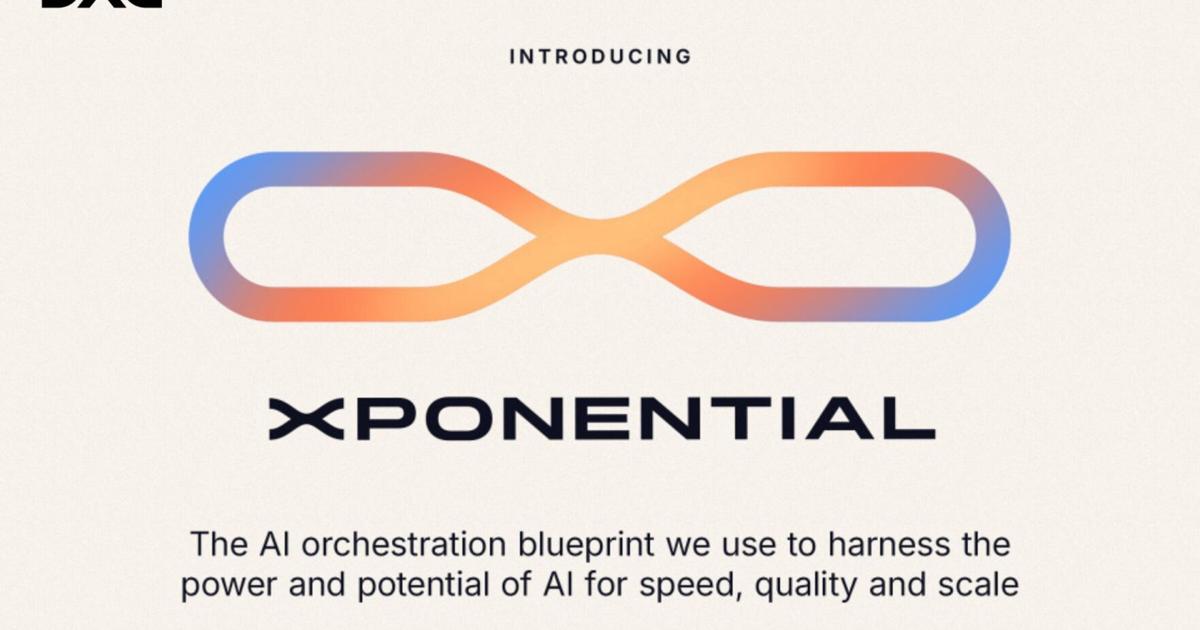Copyright forbes

Private equity sponsors are eyeing their financial future in every deal, looking for companies with value that they can build and bolster, then sell off for profit once they get there. And a report from private equity consulting firm Accordion exclusively shared with Forbes says that 97% of private equity firms expect the CFOs of their portfolio companies to always be ready for that next deal. But only 20% of CFOs actually are prepared for an exit all of the time—61% say they shift into “exit mode” when there’s a window for a sale. Nearly half of CFOs say the main reason they aren’t always exit-ready is because they don’t have the bandwidth for both this sort of readiness and day-to-day operations. Other major reasons cited included fragmented data systems, a lack of clarity about what the PE sponsor expects and competing priorities across operational initiatives. And while these are all valid reasons, the gap between the readiness sponsors want and CFOs face impacts dealmaking and can lower exit values. Private equity sponsors often want companies to assemble a wealth of information, with four out of five wanting portfolio companies to begin preparation 12 to 24 months before the deal. Accordion likened this to training for a marathon. The vast majority of sponsors want their portfolio companies to have the story of their value on full display, creating new value, having integrated systems connecting operations, finance and strategy, and being able to tell a credible equity story through growth initiatives, operational excellence and market positioning. CFOs, on the other hand, generally rely on three to six months of deal prep, which Accordion likened to training for a 5K. More than six in 10 said they’re scrambling to pull together KPIs, financial models and operational narratives, and nearly half sometimes put off strategic initiatives until the exit window is imminent. So how can CFOs and private equity sponsors close this gap? Accordion recommends that CFOs align their exit priorities with their sponsors before dealmaking begins. It’s not easy—there are always day-to-day operational priorities—but it makes deals move more smoothly. Using AI to enhance forecasting, reporting, scenario modeling and data visualization can make it easier to maintain exit readiness, but it can also enhance a company’s value, Accordion found. “CFOs who prioritize AI not only improve internal decision-making but also strengthen the company’s credibility and multiples at exit,” the report states. A new study from enterprise financial management software provider OneStream found that most CFOs are still navigating the path to AI fully scale in their departments. Just a third have successfully deployed AI at scale, the study found, but most are moving toward a more cross-functional and strategic use of the technology. I talked to OneStream CEO Tom Shea about the report, and an excerpt from our conversation appears later in this newsletter. We’re always looking to improve the stories and format of this newsletter. We’d appreciate your feedback in this brief reader survey. This is the published version of Forbes' CFO newsletter, which offers the latest news for chief finance officers and other leaders focused on the budget. Sign up here to get it delivered to your inbox every Tuesday. ECONOMIC INDICATORS Volunteers at the Lutheran Settlement House in Philadelphia pack bags of groceries for their daily food pantry last week, anticipating cuts in SNAP benefits. MATTHEW HATCHER/AFP via Getty Images The government shutdown continues, and is now the longest one ever. However, the big-picture economic costs of the shutdown are starting to surface for millions of Americans. Many more federal workers are missing paychecks, and the Trump Administration tried to suspend all SNAP payments as of November 1. A judge ordered the administration to tap a contingency fund for the aid program as the shutdown continues this month, but the administration said it only has the funds available to cover 50% of what households’ allotments. The Congressional Budget Office reported last week that spending losses from the shutdown will cost the U.S. $7 billion to $14 billion in GDP so far. Meanwhile, the subsidy for health insurance under the Affordable Care Act has expired. Democrats have said Republicans’ failure to renew the subsidy is why they oppose reopening the government. Forbes senior contributor Joshua Cohen writes that without the subsidy, premium costs are rapidly increasing: up an average of 17% in states that run their own insurance exchanges, and 30% in states whose programs are managed by the federal government. Forbes senior contributor Bruce Japsen writes that companies that offered plans to millions of Americans through the Affordable Care Act are bracing for large losses of customers who can no longer afford coverage—like the two-thirds of customers UnitedHealthcare expects to lose. It’s little surprise that consumer confidence is continuing to drop, falling one point in October to a seven-month low of 94.6, according to the Conference Board. Actual data on the state of the economy is not readily available due to the government shutdown, but Treasury Secretary Scott Bessent said in an interview on CNN Sunday that he believes some sectors of the economy are either in recession or at risk of one. Bessent placed the blame on the Federal Reserve, which has slowly been rolling back interest rates—too slowly, in Bessent’s opinion. Last week, the Federal Open Market Committee cut interest rates by a quarter point for the second month in a row, setting baselines at between 3.75% and 4%. But the decision itself was mixed—10 governors voted for the reduction and two against, with one opposed wanting a half-point cut and the other wanting rates to stay the same. Federal Reserve Chairman Jerome Powell said another rate cut was “not a foregone conclusion, far from it.” Markets dropped following Powell’s statement, but largely recovered in the days since. Cargo ships and shipping containers in front of the Manhattan skyline at the Port Jersey Container Terminal in Jersey City, New Jersey. CHARLY TRIBALLEAU/AFP via Getty Images President Donald Trump’s authority to enact tariffs using the executive branch’s emergency powers will be tested before the U.S. Supreme Court this week. Arguments are scheduled for Wednesday morning in a case brought by groups of small businesses challenging Trump’s authority to enact sweeping, so-called reciprocal tariffs on all U.S. trading partners based on whatever he declares an emergency or threat. Forbes senior contributor Howard Gleckman writes that tariffs are essentially taxes paid at the U.S. border by U.S. importers, and have been felt deeply by businesses and consumers. He cites a study from Goldman Sachs that estimates U.S. businesses paid 51% of tariff costs through August. The next largest chunk—37%—was paid by U.S. consumers. Only about 5% was paid by foreign exporters. The Constitution grants Congress the power to tax, and last week the U.S. Senate passed a bipartisan resolution calling for the end of the national emergency that Trump declared in April to impose the largest swath of tariffs. The body passed two other resolutions last week seeking to block tariffs: one against 35% tariffs on Canada and one against 50% tariffs on Brazil. These resolutions are largely symbolic—the Republican majority House of Representatives has supported Trump's tariffs and has blocked votes on tariffs until January. During his trip to Asia last week, Trump focused more on negotiating tariffs with various leaders. He reached a multifaceted deal with South Korea that lowers the tariff on imports to 15%, down from a previous 25%, in exchange for a $350 billion investment in the U.S.—$200 billion in cash and $150 billion in shipbuilding investments. Trump, who has been threatening new and larger tariffs on China in recent weeks, slashed tariffs in an “amazing meeting” with Chinese President Xi Jinping. The U.S., which initially enacted a 20% tariff on Chinese imports because the country provided chemicals to make the synthetic opioid fentanyl, agreed to take those tariffs down to 10% as Xi agreed to a stronger crackdown on those exports. China agreed to pause its planned export controls on rare earth minerals for a year, and will also resume purchasing U.S.-grown soybeans and other farm products. But, Forbes senior contributor William Pesek writes, these new deals might not actually be worth much. They’re not in writing, and they miss a lot of specifics on pretty big issues—like Beijing’s claims of sovereignty over U.S.-supported Taiwan, the deal for U.S. investors to purchase control of TikTok or concerns about Chinese theft of U.S. intellectual property. ARTIFICIAL INTELLIGENCE Illustration by Macy Sinreich for Forbes; Images by Adam Crowley/Getty Images; NA/Getty Images, Wernerimages/Getty Images, 4x6/Getty Images, FatCamera/Getty Images As the current AI boom approaches its third birthday, instead of just praising what the technology can do, there are many zooming in on the things that it cannot. And one thing that generative AI cannot do, writes Forbes’ Anna Tong, is replace the financial work done by an investment banker. Sure, AI can write a novel in minutes. After all, it’s got all of the written works available on the internet as data to use in that endeavor. But specialized data entry, use of a spreadsheet or how to financially manage an IPO or merger? Those are all specific processes that are often proprietary and unique to individual companies, and actually require a degree of human decision-making that isn’t easily replicated from scrapable data. But even if the data were there in some form or fashion, Tong writes, it would be difficult to ensure AI makes reliable financial decisions. Humans learn on the job, often catching nuances on the first try. AI, on the other hand, cannot do that. What it can do is make a raft of quick decisions based on other decisions—and if there is one hallucination or mistake at the base, the end result could be disastrously wrong. OFF THE LEDGER Why CFOs Are Skeptical—But Still Optimistic—About AI OneStream Software CEO Tom Shea OneStream Software A new study from enterprise financial software company OneStream found that CFOs are increasingly leading AI strategy at their companies—75% say they’re now driving it—but that they are also skeptical of how well the technology works. The study found that only a third of CFOs say their finance departments have scaled AI solutions, though 80% anticipate funding increasing to bring these capabilities to finance departments in the next year. More than half are planning deep solutions to improve forecasting and strategy modeling. I spoke with OneStream CEO Tom Shea about the study results, what it means for the finance department and how CFOs can get the most out of AI. This conversation has been edited for length, clarity and continuity. Depending on who’s doing the study and who they’re asking, ROI of AI is either great or terrible. CFOs are more in the middle in this study, with 56% seeing real productivity gains, but 32% being skeptical about ROI. What do CFOs think of AI ROI? Shea: That’s where a lot of their skepticism comes in, because they’re thinking, ‘How do I measure where this is?’ They’re looking for use cases that can have a more defined return that you can quantify, that you can understand. That’s why it’s so important. We’ve been at this for almost a decade. We learned a lot about the way CFOs were thinking about it. Not only did we have to show them a demonstrable return [on investment], but we had to show them the transparency to even adopt it. Some of the more forward-looking CFOs started on custom projects, and they would hire data scientists and try to build their own, which would have not very high ROI. We’re at an inflection point where they don’t want to do homegrown science experiments. They want applied solutions that demonstrate real value. Today, what are most CFOs using AI for? When you think of AI across the corporation in general, non-deterministic use cases are the most prevalent. Summarization is the most prevalent. If you’re in engineering at all, the coding capabilities and acceleration is a very high-value use case. There are measurable returns there. When you get to the CFO, they’re looking for highly quantitative answers. A CFO needs to be able to ask a question and if it’s 80% correct, it’s 0% useful. When you think about the use cases for the CFO, it’s not fully realized right now. The potential use cases are narrow in scope. You could use it to summarize invoices documents because it’s really good at text; you’re getting a summary out of it. But if you’re saying, ‘Go find this number for me and guarantee that the number is correct,’ we can agree that the total sales number for my company is X amount of dollars. Right now, if somebody went to the system, they would find [that number]. But when was the last time it was calculated? Are all the workflows done? Should I use that number? Is the state of the number usable? It’s more than just: Did you find the right number? It’s the state of it. That’s so interesting because when you look at the history of computer systems, they were really great at deterministic functions and dealing only with numbers—but not with words. AI seems to flip it all on its head. A common use case is if you’re a public company, it’s very useful in investor relations and in your 10-Ks and 10-Qs and detailed textual filings. The AI is going to be good at working with those, but it still has that human-in-the-loop editorial process. Somebody gave it the right information to feed the report, then you’re getting summarized, and then you’re taking it out. What would you say to CFOs that are looking at AI in front of them, trying to decide what the best uses are and figure out strategy going forward? AI forecasting and prediction is game-changing to a business because if you can give somebody very high accuracy in predicting demand, the rest of your business flows off of that. You calibrate to that. There are high-impact use cases that companies should absolutely be pursuing, but think of it as a series of steps. That’s not the only way that you're going to get value, but it’s a quantifiable, obvious way to go. The best analogy that I can use is self-driving cars. If you think of Waymo, we can’t take the sensors off of one of those cars, go to a 1970s Buick and put those sensors on it, and have a self-driving car. The car has to have a modern chassis. It has to have a computer and be digitally controlled. First and foremost for a CFO is you’ve got to make sure that you have the right platforms in place that are modern and digital. Then you can start to layer. You start thinking about use cases: forecasting as the obvious use case, but [also] anomaly detection. If we have a centralized platform, we can look at all kinds of financial activity happening. You have the platform, but anomaly detectors are like the sensors on a car. Ultimately, you need this “brain” to process the forecast of where you’re going to go. Just like you have the “brain” and the self-driving car helping you navigate, its processing sensors understand what’s happening in the environment around it. Then it can also decide for you how it should go about getting you there, and tell the car to accelerate or brake. It’s the same thing in finance. We have to have that core platform. We have to have sensors that tell us what’s happening in the business by reading what’s happening on the platform. Then the agents can actually read those and start to think about, ‘This is what I’m seeing. I understand it, and because I’m part of a platform, I can now take action on that.’ As a CFO, you want to get on that journey. Start off, start predicting, start understanding your environment better. Start using anomaly detection, and then getting more and more value from the agents as they can help you interpret that information and apply it. You’ve got to get started in this process, and that can be all the way back to the chassis. If you’ve got a mess of financial systems, you’ve got to clean those up to get the real ultimate value that you would expect from AI. COMINGS + GOINGS Logistics and shipping company Lineage hired Robb LeMasters as chief financial officer, effective November 10. LeMasters most recently worked as the chief financial officer of BWX Technologies, Inc. and will succeed Rob Crisci, who is retiring. Rent-to-own financing provider the Upbound Group selected Hal Khouri as executive vice president and chief financial officer, effective November 10. Khouri most recently worked as the executive vice president and chief financial officer of goeasy Ltd., and will succeed CEO Fahmi Karam, who has been working in both roles since June. Self-service digital advertising firm The Trade Desk appointed Anders Mortensen as chief revenue officer, effective November 4. Mortensen joins the company from Google, where he worked most recently as a vice president, and he will succeed Jed Dederick. STRATEGIES + ADVICE Today’s top companies are focused on creating value, and have put in place sets of principles to balance results with innovation, autonomous teams and a culture that can adapt to current situations. Here’s how to reorient a company’s strategy toward principled value creation. A positive workplace culture is vital to keep good employees engaged and motivated to stay at a company. Here are four steps to reinvigorate your workplace culture and ensure it is a healthy one. Which large company announced its intention to buy Tylenol maker Kenvue in a $48.7 billion deal this week? A. Unilever B. Kimberly-Clark C. Procter & Gamble D. Colgate-Palmolive See if you got the right answer here. Got a tip? Share confidential information with Forbes. Editorial StandardsReprints & Permissions



